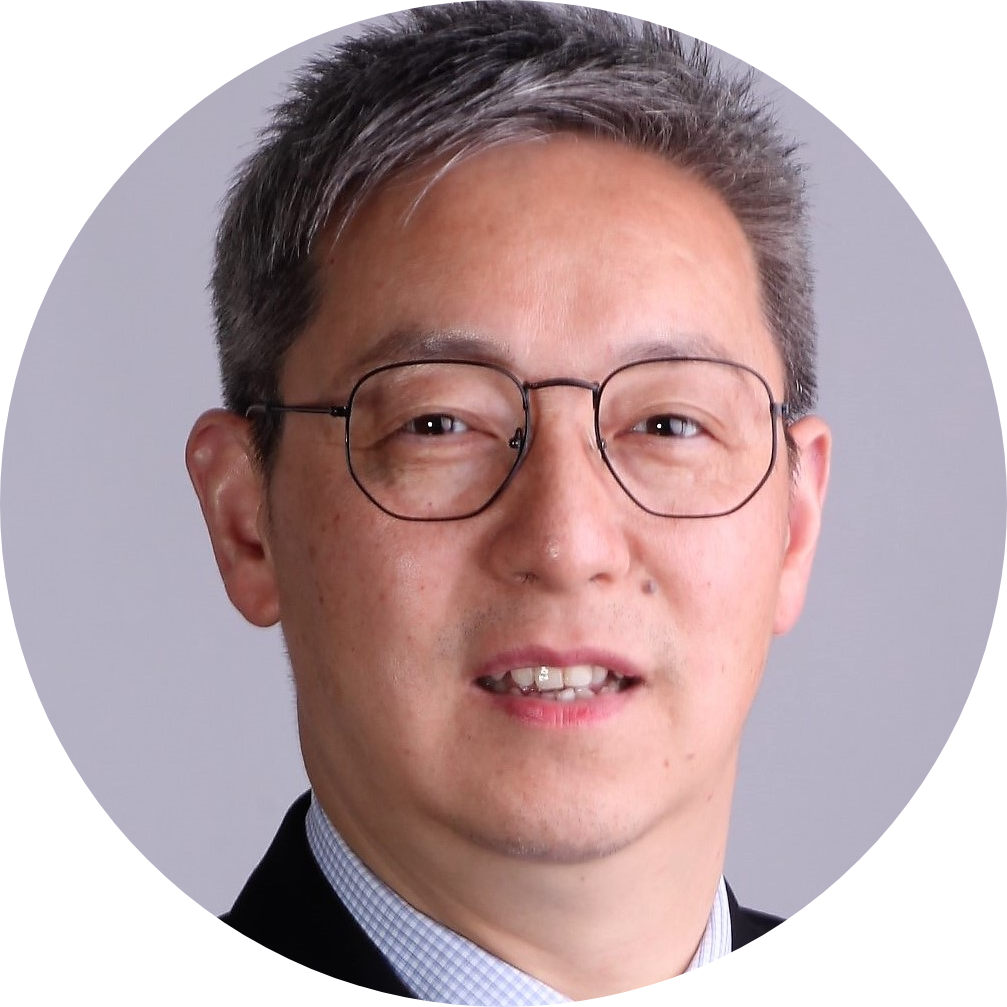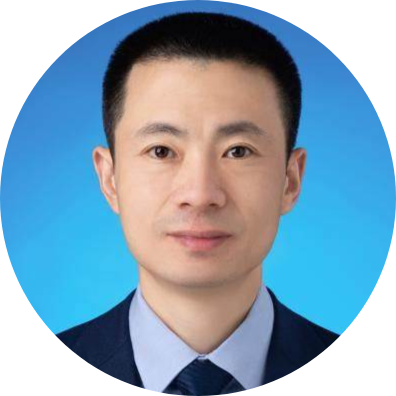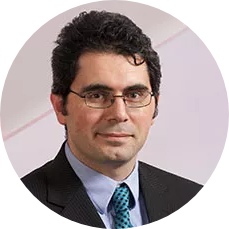Plenary Speaker Ⅰ

Decheng Wan
Shanghai Jiao Tong University, China
Brief Introduction: Prof. Decheng Wan is Director of Computational Marine Hydrodynamics Laboratory (CMHL) of Shanghai Jiao Tong University, Chair Professor of Chang Jiang Scholar, Distinguished Professor of Shanghai Eastern Scholar, Shanghai Excellent Academic Leader, the adjunct full professor of University of Strathclyde of UK, Zhejiang University, Dalian University of Technology, respectively. He is now the President of International Society of Offshore and Polar Engineers (ISOPE), the chair of ISOPE International Hydrodynamic Committee, chair of Executive Committee of International Workshop on Ship and Marine Hydrodynamics (IWSH), chair of Executive Committee of China National Conference on Marine CFD, member of Advisor Committee of International Towing Tank Conference (ITTC), member of Steering Committee of International CFD Workshop in Ship Hydrodynamics, associate editor-in-chief of Journal of Hydrodynamics, and member of editorial board of Ocean Engineering and Applied Ocean Research, etc. Prof. Wan has been selected as TOP 2% scientists from all over the world by Stanford University. He is also awarded the most cited researchers by Elsevier, and TOP 0.05% global scholars by ScholarGPS. He received CH Kim Award, ISOPE Award, Prof. Peiyuan Zhou's First Award of Hydrodynamics, Best paper of Moan-Faltinsen Award, etc. He has published more than 500 peer-reviewed journal papers and more than 60 patents and software copyrights. His remarkable work of development of numerical solvers for the complex flows in ship and ocean engineering have been recognized by the world-wide researchers in the field of marine hydrodynamics.
Speech Title: Novel Numerical Techniques for Foam Flows around Marine Structures
Abstract: Based on the observations at sea, large range of white foam flow exists widely around marine structures, especially for high-speed sailing ships and large offshore platforms. The foam flow consists of many complex phenomena, including multi-scale bubble entrainment, atomized droplets splash and air-water permeation. In this lecture, main characteristics of the foam flows around marine structures are explained firstly. Then, effects of the foam flow on structure performance are further introduced, including ship resistance, propulsion, maneuverability, slamming, wave load, noise and acoustic detection performance. In order to meet these important research requirements, novel numerical methods for high-fidelity simulation of complex, turbulent air entraining flow around structures are introduced in detail. A geometrical VOF scheme is employed to capture and transport the free surface accurately. A highly robust algorithm with mass-momentum consistent advection is highly recommended to guarantee the numerical stability in simulating problems characterized by large-density-ratio. Besides, the block-structured adaptive mesh refinement (BAMR) technique can be adapted to refine the grids near the two-phase interface and body surface. Since logical structures among the blocks are identical, it is convenient for the implementation of high-order schemes for convection terms. When considering the large-scale bubbly flow around a real ship, it is necessary to develop the sub-grid mechanistic model to describe the basic physical process in turbulent air-entraining flow. The advanced polydisperse two-fluid models, which has been used to solve bubbly flows around ships in recent years, is introduced in this lecture. Based on the numerical methods above, high-fidelity simulations of some typical two-phase flow phenomena such as plunging breaking waves, bow wave breaking, flow around a surface-piercing foil and wake behind a transom stern are performed and introduced. These phenomena contain the violent breaking, mixed air-water turbulent flow and multi-scale flow structures, which have been well reproduced and analyzed in the numerical simulations. Finally, future research prospects are presented, which point out the key directions of marine structure foam flow simulations.
Plenary Speaker Ⅱ

Aman Zhang
Harbin Engineering University, China
Brief Introduction: A-Man Zhang is a National Level Distinguished Professor at Harbin Engineering University. His main research fields include bubble dynamics and fluid-structure interaction. He established a new equation for bubble dynamics, constructed fully coupled gas-liquid-solid dynamic models and methods, led the development of the FSLAB fundamental industrial software for fluid-structure interaction and the construction of a large-scale underwater specialized scientific experimental facility, developed new technologies for efficient energy transfer and protection of underwater bubbles, and the research achievements have been widely applied. Academic papers are published on renowned journals including Journal of Fluid Mechanics and Journal of Computational Physics, with more than 15,000 citations. Received multiple awards such as the National Innovation Competition Award, Ho Leung Ho Lee Innovation Award, the Xplore Prize, Second Prize of the National Technology Invention Award, Second Prize of the National Science and Technology Progress Award, Highly Ranked Scholar Award. Served as editor in chief of Journal of Marine Science and Application, and editorial board member of multiple academic journals including Applied Ocean Research and Theoretical and Applied Mechanics Letters, among others.
Speech Title: New Progress on Bubble Dynamics and Its Application
Abstract: Bubble dynamics is a fundamental scientific problem in many fields such as cavitation and deep-sea exploration. However, due to the complexity of bubble motion, there are still difficult mechanical problems to be overcome, such as bubble dynamics theory, multi bubble interactions, underwater gas-liquid solid coupling effects, bubble damage and protection mechanisms. To this end, a unified form of bubble dynamics equation was established, and an underwater gas-liquid solid coupling dynamics model and algorithm were proposed. A series of experimental methods for bubble dynamics were established, revealing the mechanisms and laws of bubble dynamics in different environments, and forming a new technology for efficient energy transfer and protection of bubbles, which has been widely applied.
Plenary Speaker Ⅲ

Erkan Oterkus
University of Strathclyde, UK
Brief Introduction: Dr. Erkan Oterkus is a professor in the department of Naval Architecture, Ocean and Marine Engineering of University of Strathclyde. He is also the director of Ocean Energy Research Unit (OERU) and co-director of PeriDynamics Research Centre (PDRC). He received his PhD from University of Arizona, USA and was a researcher at NASA Langley Research Center, USA before joining University of Strathclyde. His research mainly focuses on structural analysis of wide range of marine structures by using some of the state-of-the-art techniques including peridynamics and inverse finite element method (iFEM). He is the co-author of numerous publications including the first of book on peridynamics, journal and conference papers. Prof. Oterkus was a visiting professor at Stanford University (USA), University of Padova (Italy), Otto von Guericke University (Germany) and Nihon University (Japan). Prof. Oterkus is the editor-in-chief of Sustainable Marine Structures (NASS). He is also an associate editor of Journal of Peridynamics and Nonlocal Modeling (Springer), ASME Journal of Engineering Materials and Technology, and Frontiers in Materials (Frontiers).
Speech Title: Peridynamics: Past, Present and Future
Abstract: In order to determine the deformation response of materials and structures subjected to external loading conditions, classical continuum mechanics (CCM) was introduced by disregarding the atomistic structure. CCM has been successfully applied to numerous challenging problems. However, its governing equation faced a difficulty when there is any discontinuity in the structure such as a crack, since spatial partial derivatives in its governing equation are not defined for such a condition. In order to overcome this problem, a new continuum mechanics approach, Peridynamics (PD), was recently introduced with the intention that PD equations remain always valid whether there is any discontinuity in the structure or not. This character of PD makes this new approach a powerful tool for predicting crack initiation and propagation. Moreover, PD can be considered as the continuum version of molecular dynamics. Therefore, PD can be a suitable candidate for multi-scale analysis of materials. Furthermore, PD formulation can also be extended to other fields such as thermal diffusion, moisture diffusion, etc., so that it can be used as a single platform for multiphysics analysis of materials and structures with damage prediction capability. Hence, in this presentation, a brief information about peridynamics will be provided by covering past developments, presenting current progress and highlighting potential future research directions.
Plenary Speaker Ⅳ

Chien Ming Wang
The University of Queensland, Australia
Brief Introduction: C.M. Wang is a Professor in Structural Engineering in The University of Queensland. He is a Chartered Structural Engineer, a Fellow of the Australian Academy of Technology and Engineering, a Member of the European Academy of Science and Arts, a Fellow of Academy of Engineering Singapore, a Fellow of the Institution of Engineers Singapore, a Fellow of the Institution of Structural Engineers and a Fellow of the Society of Floating Solutions (Singapore).
His research interests are in the areas of structural stability, vibration, optimization, plated structures and Mega‐Floats. He has published over 500 journal papers and coauthored 10 books such as Very Large Floating Structures, Structural Vibration, Shear Deformable Beams and Plates and Exact Solutions for Buckling of Structural Members. He is an Editor‐in‐Chief of the International Journal of Structural Stability and Dynamics and an Editorial Board Member in several journals including Engineering Structures, International Journal of Applied Mechanics, and Journal of Marine Science and Engineering. His current research in UQ includes the development of next generation offshore fish pens and seaweed cultivation platforms.
Currently, he is the Leader of the Offshore Engineering Programme of the Blue Economy Cooperative Research Centre to conduct research projects that combine seafood, renewable energy and offshore engineering for the first time, underpinned by a $329 million from the Australian Government and 45 industry partners over a 10-year period. He is founder and leader of the International Engineering Science Consortium, and the Chairman of the East Asia Pacific Conference on Structural Engineering and Construction steering committee.
His many awards include the 2019 Nishino Medal, 2019 JN Reddy Medal, 2018 Singapore's Minister of National Development's R&D Award (Special Mention Category), 2018 IStructE Singapore Structural Awards, 2014 Keith Eaton Award, 2009 Lewis Kent Award, 2013 IES Prestigious Engineering Achievement Award, 2011 IES/IStructE Best Paper Award and the Grand Prize of the 2013 Next Generation Container Port Challenge. He was the consultant and advisor on many structural and floating projects.
Speech Title: Blue Economy CRC Offshore Aquaculture Projects: SeaFisher and SubSCI
Abstract: As global demand for sustainable food and marine biomass intensifies, offshore aquaculture has become an increasingly vital contributor to food security and environmental resilience. This keynote paper focuses on two Blue Economy Cooperative Research Centre's offshore aquaculture projects: the SeaFisher – a submersible offshore fish pen and the SubSCI – a submersible seaweed cultivation infrastructure that can perform depth cycling in deep offshore waters. The conceptual design, modeling, structural and hydroelastic analyses, and testing of these two offshore aquaculture systems will be presented.